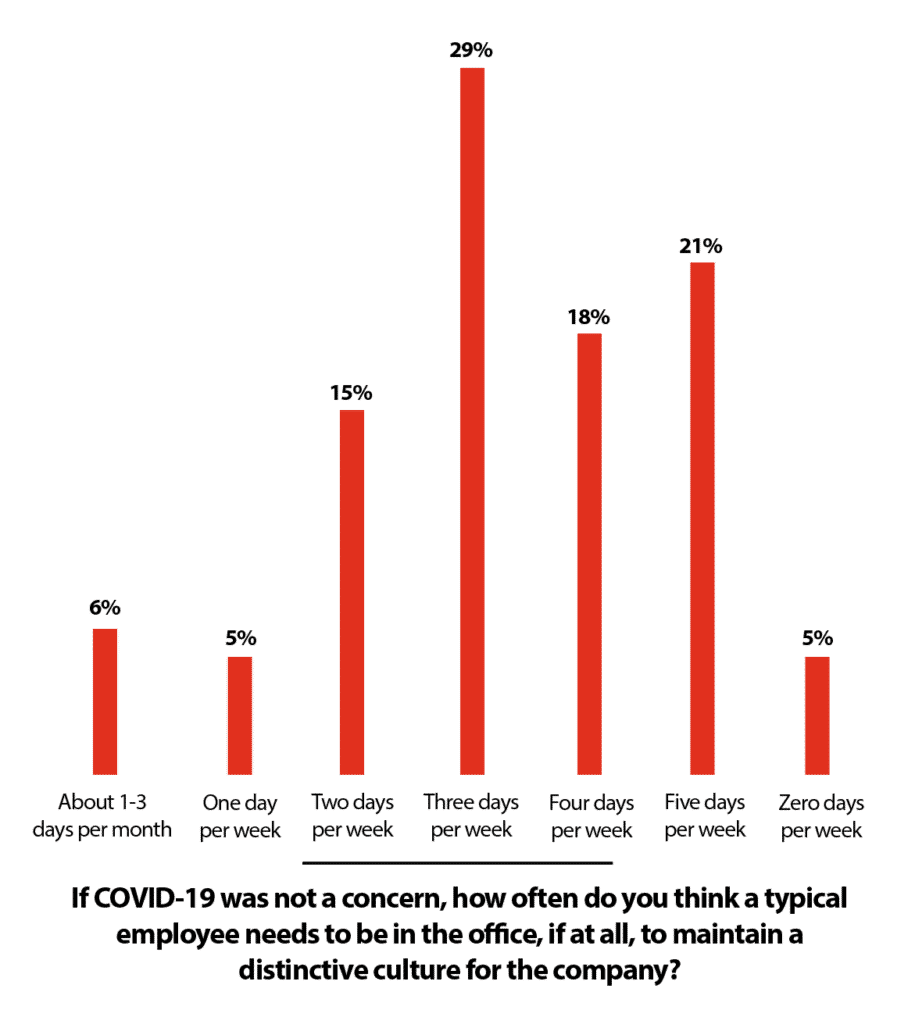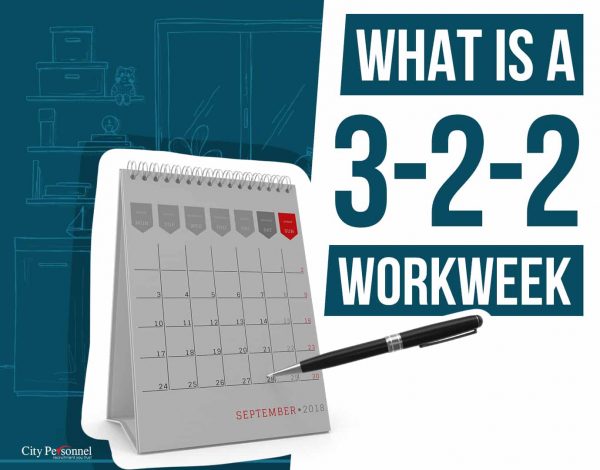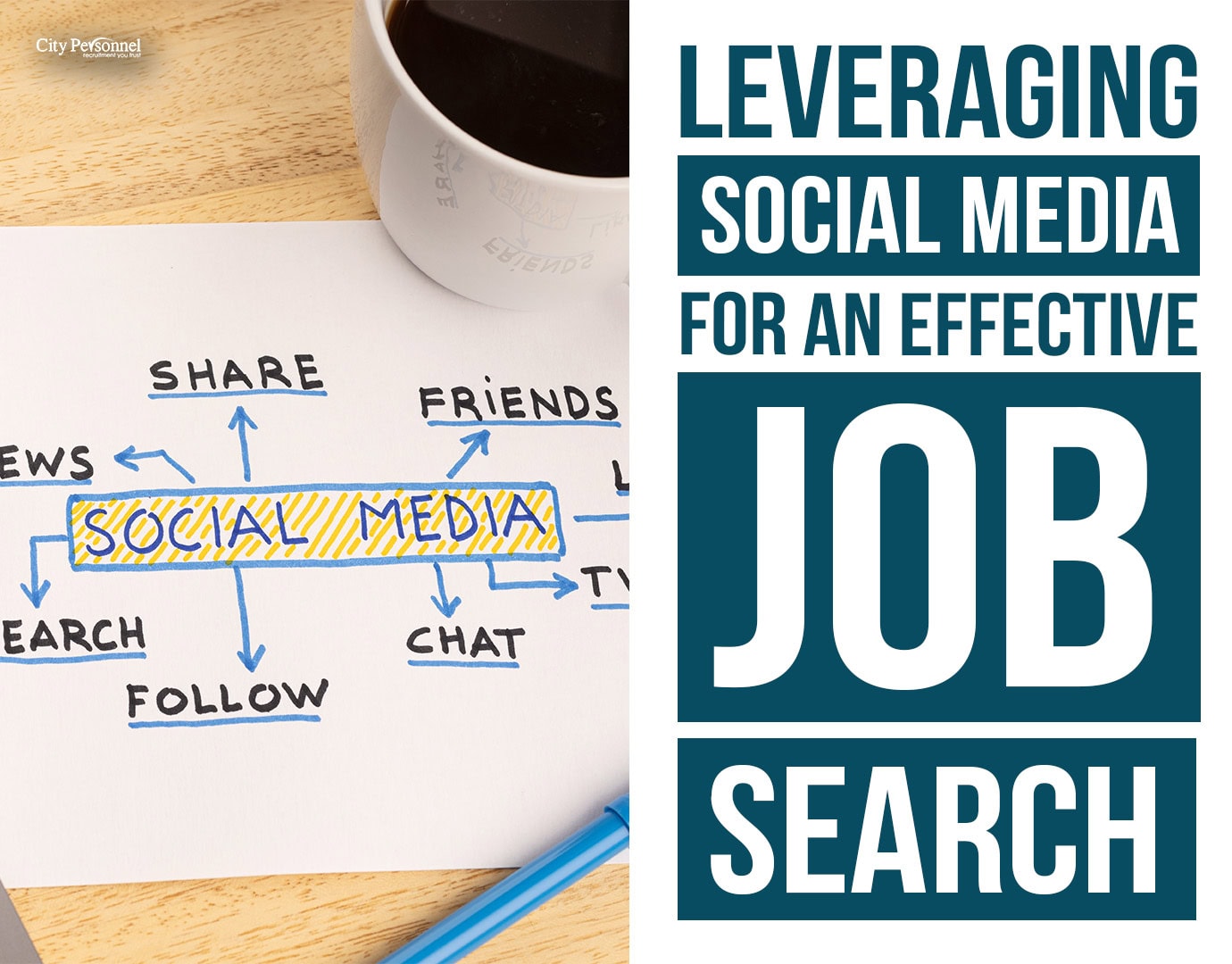No More 9-5 Workweeks in 2021?
Before we get into what a 3-2-2 workweek is, let’s talk about the benefits of working from home. A recent study by Stanford was conducted for over 9 months with 16,000 working participants. The study found that working from home increased the productivity of these workers by 13%.
I am sure most of you thought working from home was less productive because of the distractions. However, according to the study, the performance increase was due to more calls per minute because of the quieter, more convenient working environment. Another reason for the productivity increase was because the workers took fewer breaks and fewer sick days.
The Stanford study results suggests that working from home is more beneficial than a 9-5 workweek.
According to another study, remote employees do an additional fifteen days of work per year than their office-based counterparts.
Remote Work After COVID-19
In 2019, 82% of workers did some, or all, of their work at their workplace. With COVID-19 changing the way we do things, that number decreased to around 35% in the middle of 2020. In 2021, some organizations will go back to their normal 9-5 hours in the office, but some organizations will adapt to society and continue to offer fully remote work.
However, working from home isn’t always as productive as you would think after seeing the statistics from those studies. In fact, the more hours you work from home in a week, the more your productivity will decrease.
A recent study involving more than 11,000 employees showed that those who worked full time at home were 70% less productive than those who worked at the office. This proves that having only fully-remote employees isn’t the answer. The answer could be a 3-2-2 workweek.
What is a 3-2-2 Workweek?
The new 3-2-2 workweek started to become a hot topic in a recent LinkedIn article that was posted just a few weeks ago. The 3-2-2 workweek is a workweek where you spend 3 days working at the office, 2 days of remote work, and having a 2 day weekend. The 3-2-2 workweek was first suggested by Ashley Whillans, a Harvard Business School professor, who predicts that the 3-2-2 workweek will become very popular in the next couple of years.
In fact, 47% of U.S. workers believe their companies will allow them to work partially from home this year. If employees start to demand flexibility, organizations will eventually need to adapt to the new flexible schedule.
When will we see the 3-2-2 workweek?
Managers and owners are hesitant to switch to the 3-2-2 workweek. Working from home makes it more difficult to speak to each other and develop work relationships. By July 2021, 75% of executives anticipate that at least half of their employees will be working fully in the office. However, only 61% of employees expect to spend half their time in the office by July… Employers are more eager to get back to the 9-5 workweek than their employees are.
 One recent survey by PwC asked executives, “If COVID-19 was not a concern, how often do you think a typical employee needs to be in the office, if at all, to maintain a distinctive culture for the company?” Even though majority of executives anticipate having half their office back in July 2021, only 21% believe that it is necessary to have their employees at the office five days a week to maintain their company’s culture.
One recent survey by PwC asked executives, “If COVID-19 was not a concern, how often do you think a typical employee needs to be in the office, if at all, to maintain a distinctive culture for the company?” Even though majority of executives anticipate having half their office back in July 2021, only 21% believe that it is necessary to have their employees at the office five days a week to maintain their company’s culture.
The results also proved that the 3-2-2 workweek schedule would be an ideal workweek.
As you can see from the results, only 5% of those surveyed believed that employees don’t need to be in the office to maintain company culture. The good news is, the majority (29%) answered 3 days per week, making it the number one answer given. That means majority of the executives surveyed are open to changing the 9-5 workweek to a 3-2-2 workweek.
More than likely, in these next couple of months, we will see companies start moving towards a 3-2-2 schedule instead of fully remote.
Benefits of 3-2-2 Workweek
- 31% Cost of childcare is too expensive
- 27% Lack of open spots for their child
- 22% Lack of quality childcare
However, if you do switch to fully remote or 3-2-2 workweek, these mothers will no longer have to worry about childcare as they will be home to look after their children. In fact, only 66.4% of mothers with children under the age of 6 were a part of the labor force, primarily due to childcare.
Also, not having to drive to work 2 days a week will help with eliminating our carbon footprint!
What do you think? For more topics like these, check out City Personnel’s blog! If you are looking to fill a job opening and aren’t able to find qualified candidates, let us help you!








